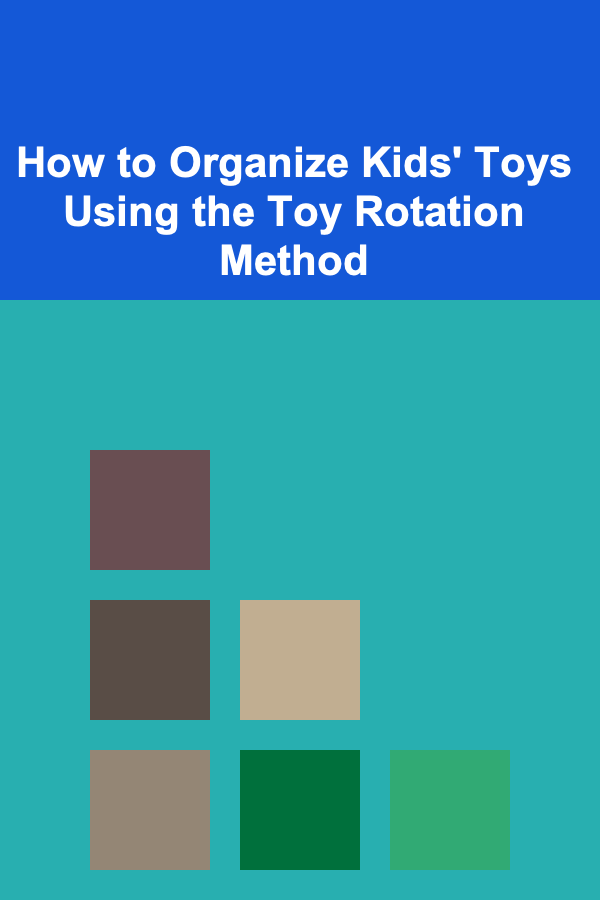
How to Build a Hair Salon Appointment To-Do List to Maximize Your Time
ebook include PDF & Audio bundle (Micro Guide)
$12.99$6.99
Limited Time Offer! Order within the next:

Running a successful hair salon requires more than just excellent styling skills; it requires efficient time management and organization to ensure that appointments are handled smoothly, and both clients and staff are satisfied. A well-structured to-do list can be the key to maximizing your time, reducing stress, and providing a seamless customer experience. In this article, we will delve into how you can build an effective hair salon appointment to-do list that helps optimize your day-to-day operations, improve your business workflow, and ultimately drive more customer satisfaction.
Understanding the Importance of Time Management in a Hair Salon
The Nature of Hair Salon Business
A hair salon is a dynamic environment where each appointment is a combination of various tasks---styling, consultations, product sales, and customer service. Without a clear plan, the day can quickly turn chaotic. One of the primary challenges in a hair salon is time management, as appointments vary in length and clients often have different needs.
Poor time management can lead to:
- Clients being unhappy due to long waiting times.
- Stylists being rushed, leading to poor service quality.
- Missed opportunities for upselling or offering additional services.
- Overlapping appointments, causing confusion and inefficiencies.
Having a to-do list that manages and organizes appointments helps salon owners and staff stay on track, enhance client experience, and avoid unnecessary stress.
Why a To-Do List is Essential
A to-do list allows you to:
- Prioritize tasks.
- Stay focused and organized throughout the day.
- Ensure that no important task or appointment is overlooked.
- Track client preferences, special requests, and other relevant details.
- Help staff members stay aligned with the day's tasks and appointments.
An appointment to-do list in a hair salon is not just a list of tasks, but a strategy to maximize productivity while maintaining the high level of service that clients expect.
Essential Components of a Hair Salon Appointment To-Do List
Building an effective to-do list involves understanding the key components that need to be included for optimum time management. Here are the core elements of an appointment to-do list for a hair salon:
A. Appointment Time Slots
The most crucial component of your to-do list is the schedule. Ensuring that you allocate enough time for each appointment, and that appointments don't overlap, is the foundation of a successful to-do list.
- Consultation Time: A quick consultation should be planned before each appointment. This is especially important for new clients or when trying a new style.
- Service Time: Allocate time based on the type of service---cuts, color treatments, blowouts, etc. Each service requires a different amount of time.
- Buffer Time: This is extra time between appointments to allow for unexpected delays, cleaning up, or taking a quick break.
Ensure that the total time per client is clear so you can accurately manage your salon's schedule.
B. Client Preferences and Notes
Make sure to include important details related to each client. This could include their preferences, the last service they had, or any special requests. This information is vital in building lasting client relationships and ensuring a personalized experience.
- Previous Service History: For repeat clients, include notes about their last service (e.g., hair color, haircut length, treatment).
- Special Requests: If the client has any specific instructions (e.g., allergies, hair texture, product preferences), ensure that they are clearly noted.
Personalized services are a great way to build customer loyalty and ensure clients feel heard and valued.
C. Staff Assignment
For salons with multiple stylists or technicians, it's important to assign specific appointments to specific staff members. Make sure that each stylist is aware of their appointments and has the necessary time for each client.
- Staffing Levels: Make sure that each stylist has enough time for the scheduled services without overbooking themselves.
- Skill Set Matching: Assign clients to stylists based on their skill set. For example, a stylist specializing in color treatments should handle color appointments, while someone proficient in haircuts handles those requests.
D. Product Recommendations and Sales
Incorporating product sales into your to-do list can improve your salon's revenue. Include reminders for stylists to recommend products or treatments to clients, based on their hair needs.
- Product Recommendations: If a client is asking about hair care, remind your stylist to suggest products that can help maintain the hairstyle or treatment.
- Special Offers: If there are any promotions running (e.g., discounts on products), ensure that stylists are aware so they can inform clients.
Integrating product recommendations into your to-do list creates an opportunity to increase salon sales while adding value to your client's visit.
E. Post-Appointment Tasks
Post-appointment tasks are just as important as pre-appointment tasks. They help ensure that clients are satisfied, and the salon is ready for the next client.
- Client Feedback: Create a space to track feedback or reviews from clients. Did they enjoy the service? Is there something that could have been done better? This information will help improve your services.
- Cleaning and Resetting: Allocate time for the stylist to clean their station, sanitize tools, and prepare for the next appointment.
These tasks ensure that your salon stays organized and efficient and that you maintain a high standard of cleanliness and customer service.
Creating the Appointment To-Do List
Now that we understand the key components, let's explore how to actually create a to-do list that maximizes time in your hair salon.
A. Choose Your Format
The format of your to-do list is important for accessibility and ease of use. You can use:
- Digital Calendar/Booking Software: Tools like Google Calendar, Square, or MindBody provide built-in scheduling features that automatically create appointment slots, allocate time, and handle client reminders.
- Paper Planner or Whiteboard: For salons that prefer to stay offline, a physical planner or whiteboard can still be highly effective, especially for smaller businesses.
- Task Management Apps: Apps like Trello, Asana, or Todoist allow for customizable lists and task tracking, and some can sync with your calendar.
The format you choose should be one that works best for your salon's workflow. A digital solution can be ideal for salons with multiple staff members and a lot of appointments, while a paper list can work well for smaller businesses.
B. Create Time Blocks
Instead of focusing on individual tasks, break your day into time blocks for each service. A typical hair salon day might look like:
- 9:00 AM -- 10:00 AM: Client 1 (Haircut)
- 10:00 AM -- 11:00 AM: Client 2 (Hair Color)
- 11:00 AM -- 12:00 PM: Client 3 (Blowout)
Time blocks help ensure that services don't overlap and that each client gets the attention they need. This also prevents overbooking and helps stylists manage their time effectively.
C. Prioritize Tasks
Once your time blocks are set, prioritize the key tasks within those blocks:
- Client Arrival: Ensure you know when your client arrives so that your stylist can welcome them and start the consultation promptly.
- Prepare for Service: Allocate time for preparation before the service begins. This might involve setting up tools, selecting products, or discussing styles with the client.
- Service Execution: During the appointment, prioritize the execution of services according to the client's needs.
- Post-Appointment Tasks: Ensure that every client's post-appointment care, such as paying bills, receiving product recommendations, and providing feedback, is taken care of.
By prioritizing key tasks within each time block, you ensure that no aspect of the appointment is rushed or forgotten.
D. Allow Buffer Time
Adding buffer time between appointments is essential for managing unexpected delays. Clients might arrive late, a service might take longer than expected, or you might need to handle an urgent matter in the middle of an appointment.
By leaving 10-15 minutes of buffer time, you'll have the flexibility to stay on schedule even when things don't go as planned.
E. Use a Color-Coded System
To make your to-do list even more effective, consider using a color-coded system. For example:
- Green for completed tasks
- Yellow for tasks in progress
- Red for urgent tasks
This simple visual aid can help you quickly assess the status of each task and stay on top of your day's appointments.
Automating and Integrating Your Appointment System
To truly maximize your time, automate wherever possible. With advances in technology, scheduling and appointment reminders can be automated, saving you time and reducing the risk of errors.
A. Online Booking Systems
Investing in an online booking system can drastically reduce administrative work. Clients can book their appointments online, and the system will automatically update your to-do list with scheduled time slots. Some systems also allow for reminders to be sent to clients, reducing the chance of missed appointments.
B. Client Reminders
Sending automated reminders can help ensure that your clients show up on time. Set up reminders a day or two before their appointment to reduce no-shows and last-minute cancellations.
C. Integrate With Staff Calendars
Many booking systems allow you to integrate with staff calendars, which can automatically assign appointments to available stylists. This integration helps eliminate scheduling conflicts and keeps everything organized in real time.
Reviewing and Optimizing Your To-Do List
After a week or two of following your to-do list, it's important to review and optimize it. Are there areas where you are consistently running late? Are clients often dissatisfied with their appointments? Based on the feedback and your own observations, tweak your to-do list to improve efficiency.
A. Track Feedback
Make sure that you track client satisfaction. Incorporate a feedback system into your to-do list and adjust your time allocation or service offerings accordingly.
B. Continuous Improvement
Always strive for improvement. As your salon grows and you get more clients, your to-do list may need to be adjusted to accommodate the changes in your business. Keep experimenting and refining your process to ensure maximum efficiency.
Conclusion
A well-crafted appointment to-do list is an essential tool for maximizing your time and providing excellent service in your hair salon. By incorporating the right elements---such as appointment times, client preferences, staff assignments, and post-appointment tasks---into your daily schedule, you'll be able to streamline operations, reduce stress, and provide a better experience for both clients and staff. With the right approach and attention to detail, your to-do list can be the cornerstone of your salon's success, helping you build a more organized, efficient, and profitable business.
Reading More From Our Other Websites
- [Organization Tip 101] How to Evaluate and Adjust Your Learning Strategies
- [Home Rental Property 101] How to Determine If a Single-Family Home for Rent is Right for You: Space, Privacy, and Responsibilities
- [Home Storage Solution 101] How to Utilize Vertical Space with Smart Hanging Storage Ideas for Your Kitchen Pantry
- [Rock Climbing Tip 101] From Beginner to Pro: The Ultimate Guide to Getting Started at Your Local Climbing Gym
- [Sewing Tip 101] Best Ways to Incorporate Organic Cotton into Quilting
- [Home Soundproofing 101] How to Soundproof a Bathroom to Reduce Noise Pollution
- [Home Space Saving 101] How to Organize Your Culinary Corner: Essential Small Kitchen Storage Ideas
- [Organization Tip 101] How to Encourage Self-Discipline in a Remote Learning Environment
- [Home Holiday Decoration 101] How to Create a Holiday-Inspired Gallery Wall for Your Home
- [Tiny Home Living Tip 101] Best Low‑Maintenance Landscaping Ideas for Tiny Home Communities with Limited Outdoor Space

Create Passive Income Streams with Deep Learning and Machine Learning
Read More
How to Organize Kids' Toys Using the Toy Rotation Method
Read More
How to Prevent Home Invasions with Advanced Security Measures
Read More
How to Turn Unused Spaces into Organized Storage Areas
Read More
How to Use Financial Ratios to Evaluate Stocks
Read More
Creating a Distraction-Free Workspace: A Comprehensive Guide
Read MoreOther Products

Create Passive Income Streams with Deep Learning and Machine Learning
Read More
How to Organize Kids' Toys Using the Toy Rotation Method
Read More
How to Prevent Home Invasions with Advanced Security Measures
Read More
How to Turn Unused Spaces into Organized Storage Areas
Read More
How to Use Financial Ratios to Evaluate Stocks
Read More